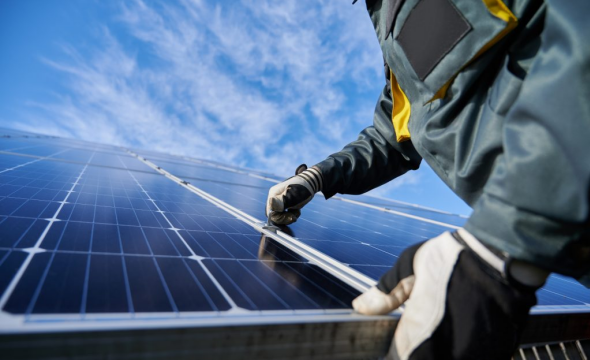Solar energy systems are now being used in a wide range of areas around the world, bringing benefits to all areas. So what are some of the areas that are commonly utilized by solar energy systems?
Residential: Many homeowners install solar panels on their roofs to provide clean, renewable energy for their homes. Solar systems can power appliances, lighting, heating, and cooling systems in residential buildings.
Commercial and Industrial: Commercial and industrial are increasingly adopting solar energy systems to reduce their carbon footprint and save money on their electricity bills. Solar panels can power offices, factories, warehouses, and other commercial spaces.
Agriculture: Solar systems have a variety of uses in agriculture. They can power irrigation systems, provide electricity for farm operations, and support sustainable agricultural practices.
Public infrastructure: Solar systems can power street lights, traffic lights, and other public infrastructure. This reduces reliance on traditional grid power and improves energy efficiency. Transportation: Solar systems are also being integrated into transportation infrastructure.
Electric vehicle charging stations can be fitted with solar panels to provide renewable energy for vehicle charging. Educational Institutions: Many schools and universities are installing solar panels to reduce their carbon footprint and teach students about renewable energy. Solar systems can power classrooms, laboratories, and other facilities.
Remote areas: Solar systems are often used in remote areas, such as islands, mountains, and deserts, where extending grid connections can be costly or impractical. These systems provide a reliable, sustainable source of electricity. Emergencies and Disaster Relief: Solar systems can be used for emergencies and disaster relief where power is interrupted. Portable solar panels and solar generators can provide lighting, power communications equipment, and support critical operations.
Large Solar Farms: Large solar farms or solar power plants are being built in many areas to generate utility-scale electricity. These farms consist of a large number of solar panels that feed power to the grid. It is important to note that the adoption and use of solar energy systems may vary depending on factors such as government policies, incentives, and the amount of sunlight in a given area.
In addition to the various areas in which solar energy systems are commonly used, there are different types of solar energy technologies and devices to meet specific needs:
Photovoltaic (PV) Systems: PV systems utilize solar panels made of semiconductor materials to convert sunlight directly into electricity. This is the most common type of solar system in residential, commercial, and industrial settings.
Concentrated Solar Power (CSP) Systems: CSP systems use mirrors or lenses to concentrate sunlight onto a receiver where it is converted into heat. The heat is used to generate steam, which drives a turbine to produce electricity. CSP systems are typically used in large solar power plants.
Solar Water Pumps: In agriculture and rural areas, solar water pumping systems are used to pump water from wells or rivers for irrigation or water supply. These systems do not require the use of grid electricity or diesel-powered water pumps.
As solar technology continues to advance, we can look forward to more innovative applications and devices to meet a wide range of energy needs. The use of solar energy systems helps reduce greenhouse gas emissions and promotes energy independence and sustainable development.
Post time: Jul-13-2023
